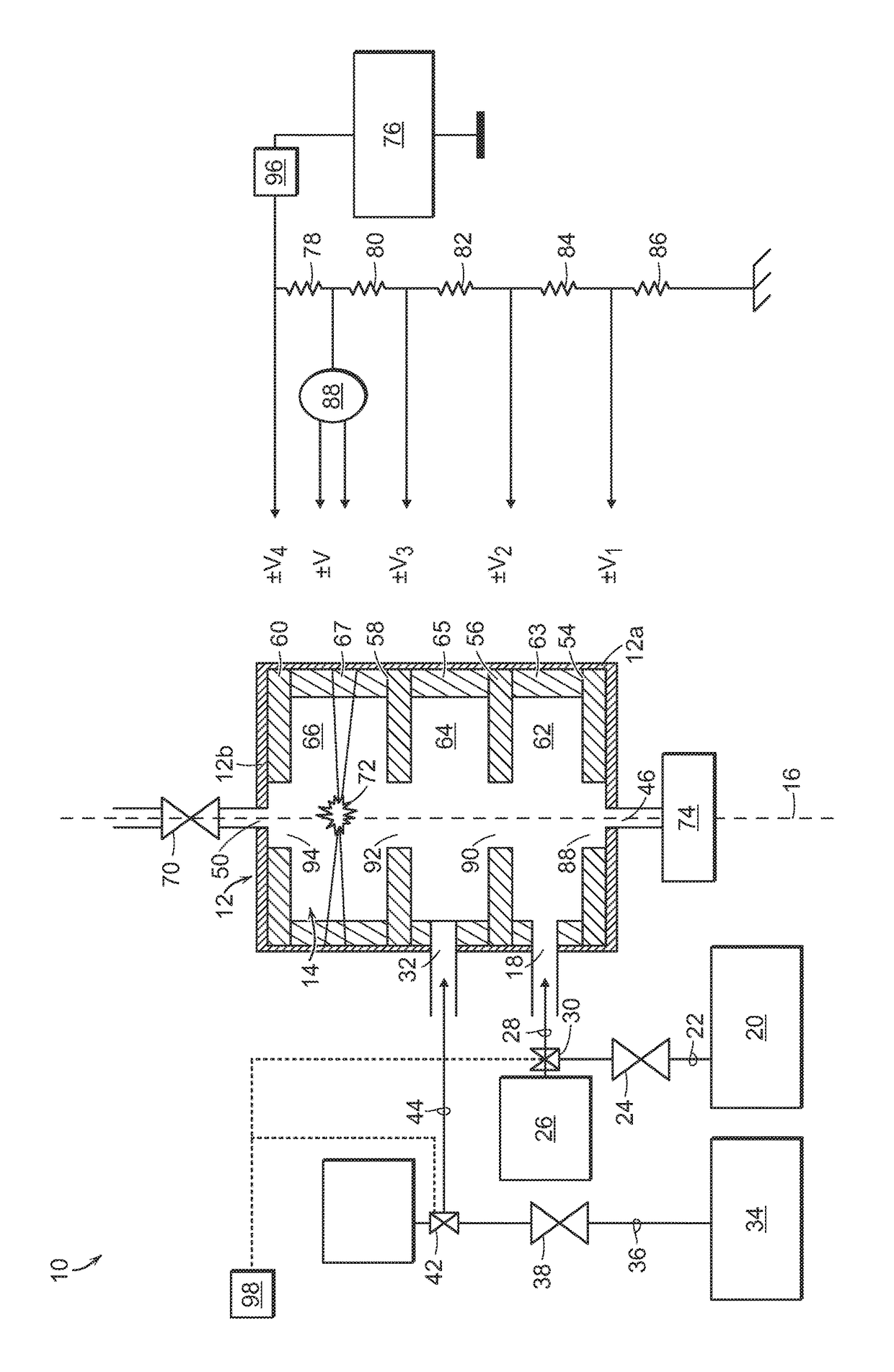Non-radioactive, capacitive discharge plasma ion source and method
a capacitive discharge and plasma ion source technology, applied in the direction of material analysis, particle separator tube details, instruments, etc., can solve the problems of narrowing potential applications, significant increase in operation cost, and limitations of known methods of these techniques, so as to reduce operating costs and administrative expenses, reduce costs, and effect of efficient positive formation
- Summary
- Abstract
- Description
- Claims
- Application Information
AI Technical Summary
Benefits of technology
Problems solved by technology
Method used
Image
Examples
Embodiment Construction
[0014]The foregoing will be apparent from the following more particular description of example embodiments of the invention, as illustrated in the accompanying drawing. The drawing is not necessarily to scale, emphasis instead being placed upon illustrating an embodiment of the present invention.
[0015]The invention generally is directed to a non-radioactive plasma ion source device and method of generating ions with a non-radioactive source. In one embodiment, the method is conducted under ambient conditions. Planar electrodes of the device, in combination with a discharger chamber, and first and second gas inlet chambers are aligned along a major longitudinal axis of a housing between a counterflow gas outlet and an analyte gas outlet. A method of operation of the non-radioactive plasma ion source device of the invention enables ionization of an analyte gas directed into either or both of the first and second gas inlet chambers with ions generated in the discharger chamber and cond...
PUM
 Login to View More
Login to View More Abstract
Description
Claims
Application Information
 Login to View More
Login to View More - R&D
- Intellectual Property
- Life Sciences
- Materials
- Tech Scout
- Unparalleled Data Quality
- Higher Quality Content
- 60% Fewer Hallucinations
Browse by: Latest US Patents, China's latest patents, Technical Efficacy Thesaurus, Application Domain, Technology Topic, Popular Technical Reports.
© 2025 PatSnap. All rights reserved.Legal|Privacy policy|Modern Slavery Act Transparency Statement|Sitemap|About US| Contact US: help@patsnap.com


